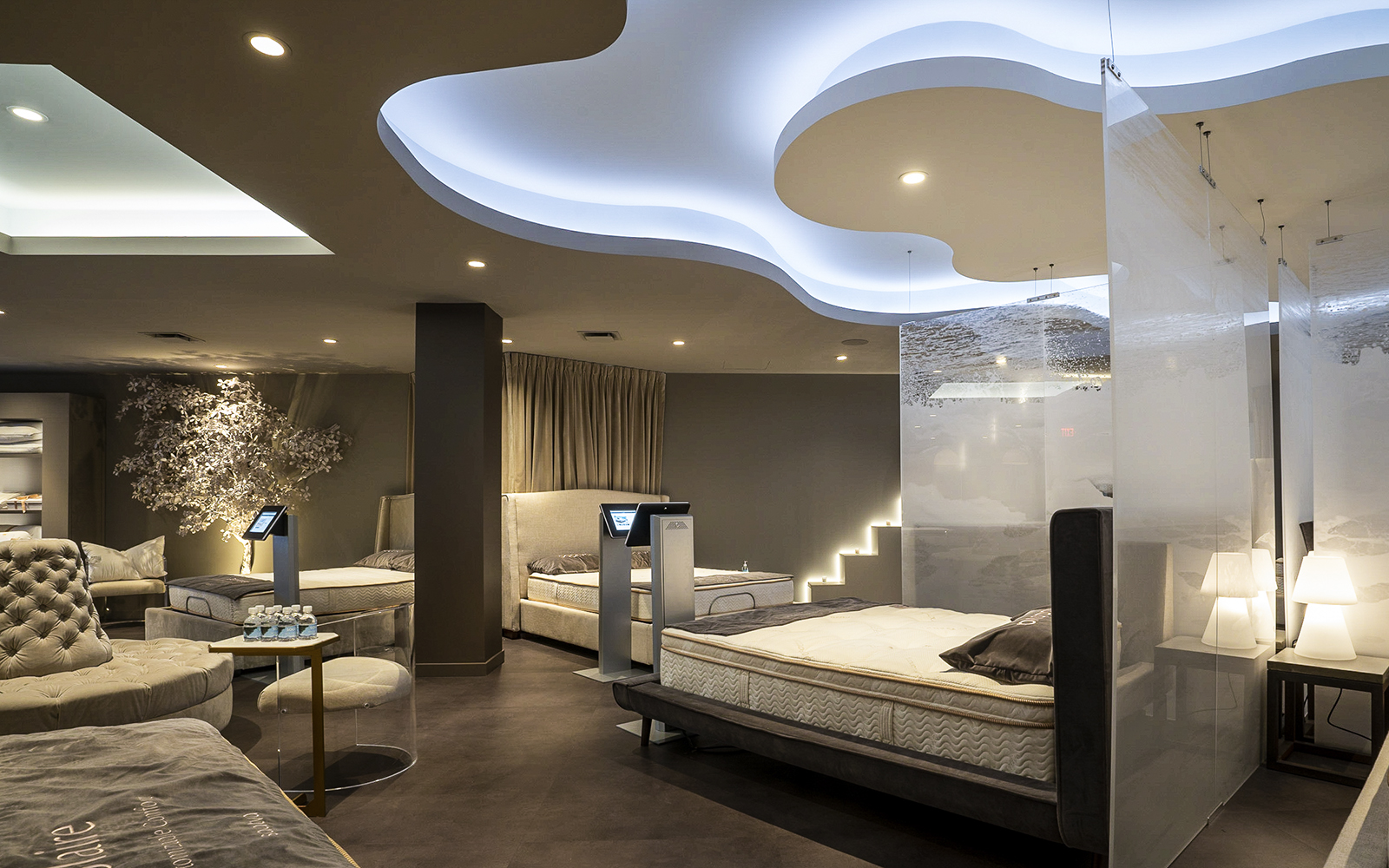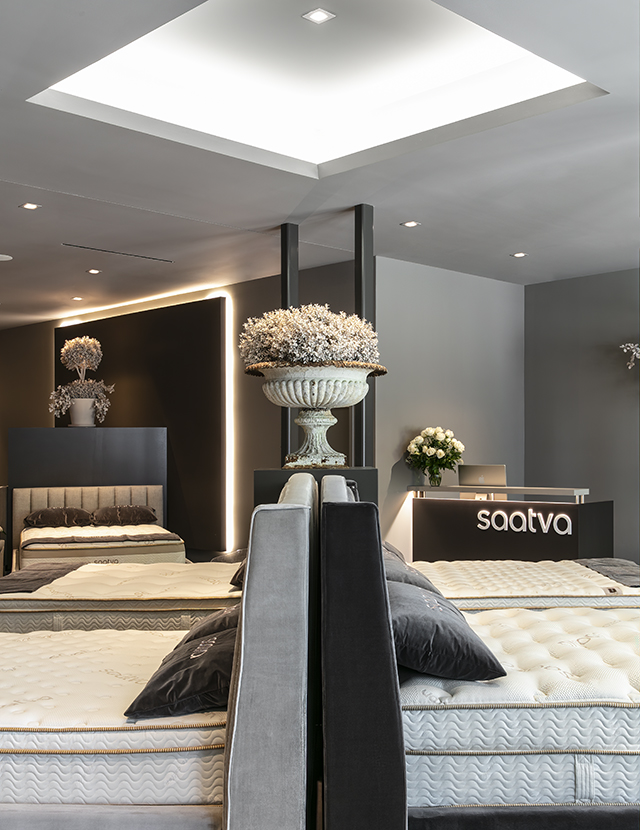|
Getting your Trinity Audio player ready...
|
Anyone who has ever bought a mattress knows the routine. You wait for a holiday sale, go to the local strip mall, test the seemingly identical mattresses lined up under fluorescent lights, and talk to a hovering salesman only to discover the advertised model is mysteriously absent from the store. Instead, you’re invited to test out a higher-priced option and offered a discount on a bundled version that comes with “free” pillows, sheets, and accessories. With dozens of names, sizes, models, and prices swirling in your head, you’re both confused and exhausted, so you agree to make a purchase on the spot. And then you wait a month for the delivery, hoping that you don’t ever have to navigate the store’s complicated exchange policy.
Ron Rudzin created Saatva as a customer-centered alternative to what had become an unpopular industry with an outdated business model. In 2010, he introduced a fully online luxury mattress shopping experience with features like around-the-clock customer service and a free home trial.

“We want to create a place where customers can really fall in love with the Saatva brand.”
Chad Lundeen
Saatva gained momentum fast. Operating as an e-commerce platform allowed the company to emphasize quality while lowering costs. In less than a decade, it reached $180 million in annual revenue to become the seventh-fastest growing private retailer in the country.
Despite the success, Rudzin, cofounder Ricky Joshi, and other Saatva leaders knew they could do even more. After all, only a fraction of total mattress sales are made online. Despite the growing popularity of direct-to-consumer e-commerce options, a whopping 80 percent of all mattress sales still happen in person. The industry statistics compelled Saatva to pivot, and the e-commerce leader decided to unlock its full potential by entering the brick-and-mortar space.
Even though it was about to go into the retail storefront world, Saatva refused to replicate the traditional model. “We wanted to continue our brand evolution by creating a touchpoint for the customers while matching the high level of service we were known for providing online,” says Vice President of Real Estate Chad Lundeen.

Courtesy of Saatva
Lundeen, an architect who amassed vast retail design experience from Vornado Realty Trust to Sonos, joined Saatva in 2021 to expand a successful pilot program started in New York City, where the company opened a flagship Manhattan store designed by Vicente Wolf Associates in 2019.
The physical locations, filled with subtle scents and elegant features, are designed to be welcoming and relaxed spaces where guests can experience Saatva on their own terms. “Sleep guides” replace commission-driven sales agents, and customers use interactive, high-definition displays to discover product features at each bed display. The luxury mattress company partnered with Samsung to merge design and technology to create a seamless viewing room experience. Behavior-sensing technology reacts to consumer activity and displays product information in real time. When shoppers lie on a mattress or reach for a product, their motion triggers the smart signage platform to change in response.
Saatva’s first viewing room opened in December of 2019, and although COVID-19 forced the company to close its doors for six months in 2020, the proof-of-concept store was still a huge success, with a 70 percent sales closing ratio that generated $5 million in revenue.

Since his arrival in 2021, Lundeen has been working to build on the original viewing room by making improvements to the overall design and customer journey. “We want to create a place where customers can really fall in love with the Saatva brand,” he says. The company plans to open 10 to 15 stores per year going forward. Saatva has already opened in Washington, DC, and San Francisco with pending openings scheduled in Boston, Chicago, Miami, San Diego, and Los Angeles.
The ongoing pandemic environment poses significant challenges to the aggressive schedule, but Lundeen says Saatva will lean on the logistics and supply chain expertise it has built over a decade in the e-commerce space. “We have great relationships with vendors and key national partners that can keep us moving forward,” he says. Saatva hand-delivers mattresses quickly and assembles all frames while disposing of old products for free.

Photo by Chris Spielmann
For individuals who visit a viewing room, those details are all worked out on the floor, where the physical and digital come together to increase satisfaction. The company harnesses the power of AI and analytics to personalize the customer experience. Additionally, Saatva employs a distributed customer service model. Instead of using one centralized contact center, “sleep guides” interact with customers online when not serving others in person.
This unique approach is causing a true disruption across the industry as the privately held company reaches new heights. In 2021, Saatva hit $421 million in total revenue. That number will approach $500 million this year. “We know this is a special brand,” Lundeen says. “And as we open more viewing rooms, more people will have the chance to experience Saatva in person.”
Spectra Audio Design Group is proud to partner with Chad Lundeen and Saatva on their national viewing room expansion. Spectra is a global, low voltage systems solutions provider focused on cutting-edge AV/IT systems design, engineering, installation, and support solutions for the corporate, retail, education, hospitality, and residential markets. Visit spectra-ny.com
StudioTROIKA is proud to assist Saatva in pioneering its new prototypical design concept nationwide. As a design firm, we take a team-focused approach to ensure that all are involved in the process from conception to completion. Our goal is to bring life to our clients’ vision in a thoughtful way.


